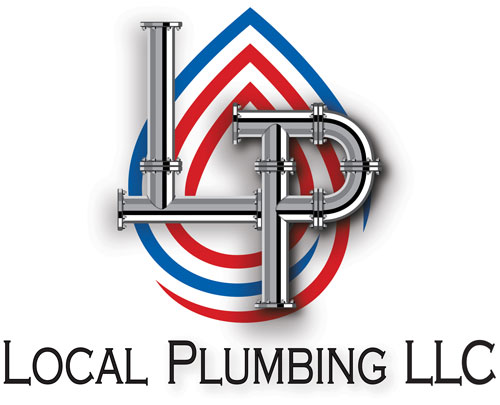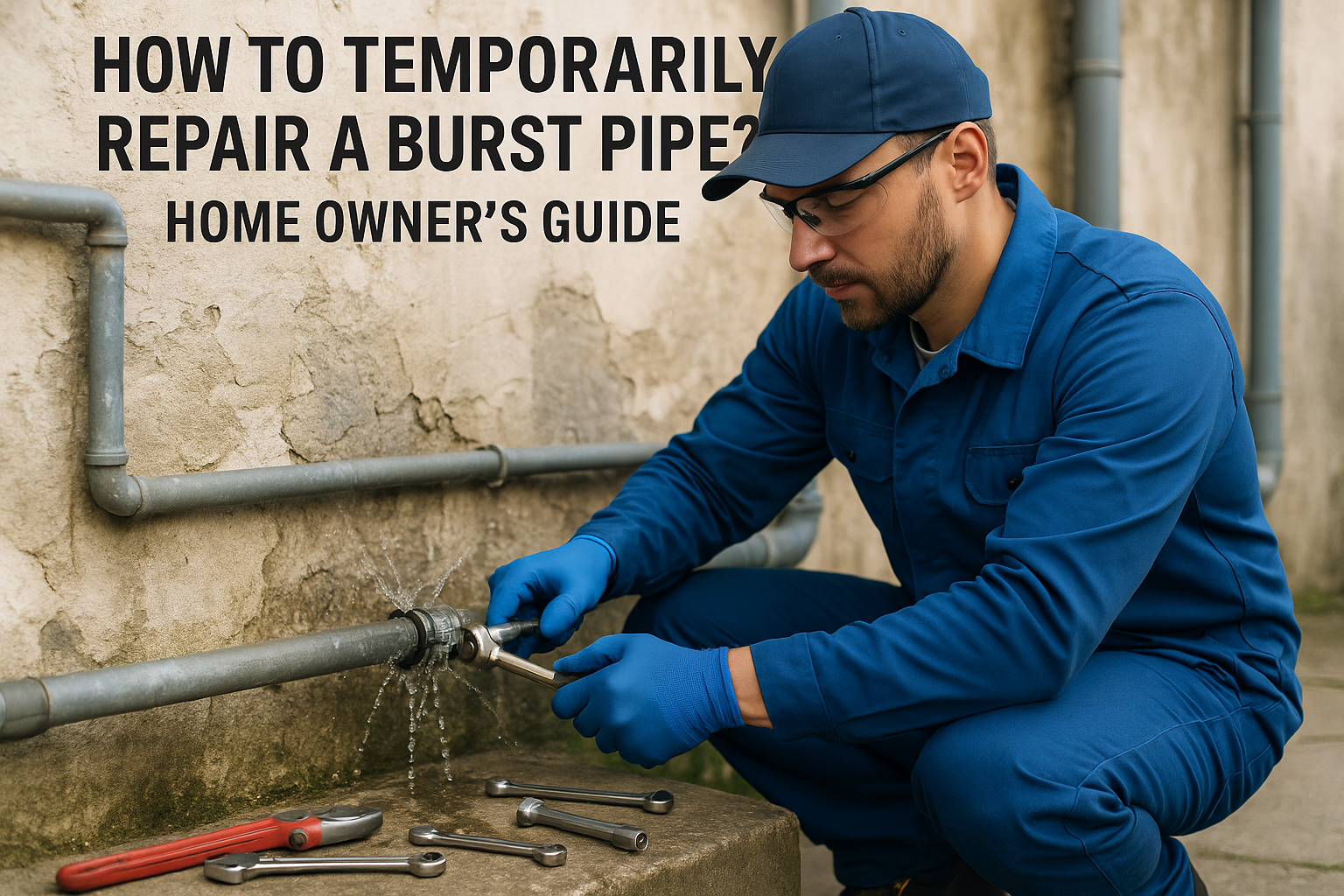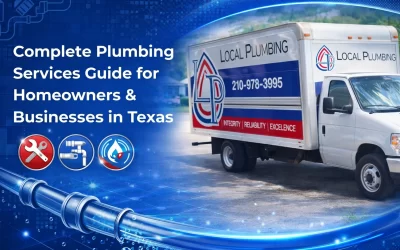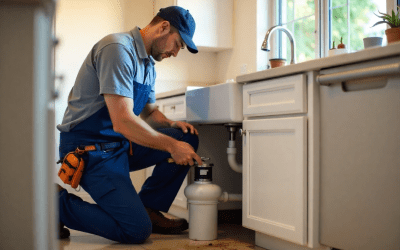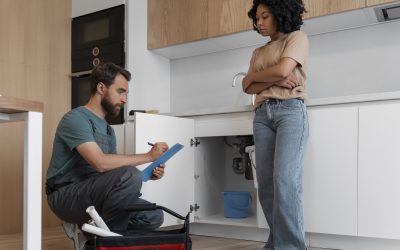This guide shares straightforward methods you can use to stabilize the situation, along with insights into the common causes of burst pipes so you know how to prevent future problems. Let’s begin!
What Causes a Pipe to Burst?
Freezing Temperatures
When water inside a pipe freezes, it expands by approximately 9%, creating extreme internal pressure. This often causes pipes, especially those in unheated areas like attics, basements, or exterior walls, to split or rupture, calling for pipe break repair.
Corrosion and Pipe Age
Metal pipes, such as galvanized steel or copper, can corrode over time due to chemical reactions with water and soil minerals. Corrosion weakens pipe walls, making them more prone to cracking under normal water pressure.
High Water Pressure
Household water pressure above 60–70 psi can stress pipes, joints, and fittings. Prolonged exposure to excessive pressure may cause sudden ruptures.
Tree Root Intrusion
Roots from nearby trees can invade underground pipes in search of water. Over time, they can crack, clog, or completely break the pipe.
Ground Shifting or Settling
Natural soil movement, construction activity, or seismic events can shift pipes out of alignment or cause stress fractures, especially in buried water lines.
Poor Installation or Low-Quality Materials
Improper pipe installation, substandard materials, or weak joint fittings increase the likelihood of failure, especially under fluctuating pressure or temperature changes.
Water Hammer (Hydraulic Shock)
Sudden changes in water flow, such as quickly shutting off a faucet, create shockwaves that can damage joints and fittings over time, leading to eventual bursts.
Immediate Steps to Take When a Pipe Bursts
Shut Off the Main Water Supply
Every minute water flows, the damage worsens. Most homes have a main shut-off valve either inside (near the water heater, basement wall, or utility room) or outside near the water meter. Turn the valve clockwise until it stops. If the valve is stuck, use an adjustable wrench or water shut-off tool. Knowing its location before a pipe burst repair emergency is critical, as many homeowners lose valuable minutes simply trying to find it.
Cut Power to Affected Areas
Water and electricity are a deadly combination. If the burst is near outlets, lighting, or appliances, immediately flip the breaker for that zone (or the whole house if unsure). The U.S. Consumer Product Safety Commission warns that even a small amount of water around electrical systems can cause shocks or fires; hence, it is advisable to shut off the power switches.
Drain the Remaining Water
After shutting off the water, open all cold-water taps starting from the highest floor to the lowest. This relieves pressure in the lines and minimizes further leakage. Then turn off the water heater to prevent damage, and open hot-water taps to fully drain the system. This step is especially important in cold weather to reduce the chance of more freezing damage.
Remove Standing Water Quickly
Water can seep into flooring, drywall, and insulation within minutes. Use mops, wet/dry vacuums, and towels to remove as much water as possible. If the spill is large, consider renting a submersible pump. The EPA notes that mold can start forming in as little as 24–48 hours, so quick drying is critical.
How to Temporarily Repair a Burst Pipe
Here are some temporary pipe break repair methods recommended by the American Red Cross’s emergency plumbing guidelines that can temporarily slow or stop water flow until a plumber arrives.
Rubber Patch and Hose Clamps
Cut a piece of heavy rubber (such as from an old garden hose or bicycle inner tube) large enough to cover the hole. Wrap it around the pipe and secure tightly with hose clamps on each side. This pipe burst repair method is recommended by emergency plumbing manuals for its quick sealing ability.
Epoxy Putty
Plumbing epoxy putty hardens into a waterproof seal. Turn off the water, clean and dry the area, then knead and apply the putty over the crack. Most epoxies cure within 5–10 minutes and can withstand normal household pressure.
Pipe Repair Tape (Self-Fusing Silicone)
Wrap silicone pipe leak repair tape tightly around the leak, stretching as you go to create a pressure seal. The tape bonds to itself and can withstand temperatures from -65°F to 500°F, making it useful in both hot and cold water lines.
Slip Coupling Replacement
If you can cut out the damaged section and have basic tools, install a slip coupling (a push-to-connect fitting like SharkBite®) to bridge the gap. This works for copper, PEX, and CPVC pipes and requires no soldering.
Call a Licensed Plumber
Even if your temporary fix holds, a professional should inspect the damage. Burst pipes may indicate underlying problems like corrosion, water hammer, or hidden leaks. Many plumbing associations advise against delaying permanent pipe leak repairs, as weakened pipes are more likely to fail again soon. So make sure you’re calling for plumbing repair services immediately.
Preventing Future Pipe Bursts
- Insulate exposed pipes in attics, basements, crawl spaces, and exterior walls with foam sleeves, fiberglass wrap, or heat tape to prevent freezing. The U.S. Department of Energy reports this can reduce freezing risk by up to 80%.
- Maintain safe water pressure by keeping it under 60 psi. Install a pressure-reducing valve (PRV) to protect joints and fittings from long-term stress that can lead to bursts.
- Conduct annual pipe inspections to check for rust, discoloration, mineral deposits, or small leaks. Early detection can prevent sudden failures and costly pipe leak repairs.
- Run a slow drip from faucets served by exposed pipes during extreme cold, and open cabinet doors to allow warm air to circulate around plumbing.
- Replace aging pipes before they fail—lifespans vary: copper (~50 years), PEX (40–50 years), CPVC (50–75 years), galvanized steel (20–50 years).
- Winterize outdoor spigots by disconnecting garden hoses and covering hose bibs with insulated faucet covers to prevent freezing and cracking.
- Install smart leak detection systems with automatic shut-off valves to catch leaks early and stop water flow before damage spreads.
- Plant trees away from water lines, keeping a distance of at least 10 feet, to prevent roots from infiltrating and cracking underground pipes.
How Local Plumbing LLC Can Help You With Burst Pipes?
When a burst pipe threatens your home, Local Plumbing LLC delivers fast, reliable, and professional solutions to protect your property from costly damage. Our licensed plumbers are available 24/7, arriving equipped with advanced leak detection tools, industry-grade pipe break repair materials, and the expertise to handle everything from temporary containment to full pipe replacement. We follow plumbing codes and best practices to ensure lasting pipe leak repairs, while also inspecting your system for hidden issues like high water pressure, corrosion, or freezing risks that could lead to future failures. With over a decade of service in the local community, we pride ourselves on rapid response, transparent pricing, and workmanship that keeps your home’s plumbing safe, efficient, and built to last.
Need help right now? Our expert plumbers are just a call away. Dial (210) 978-3995 and we’ll be on our way to stop water damage in its tracks.
